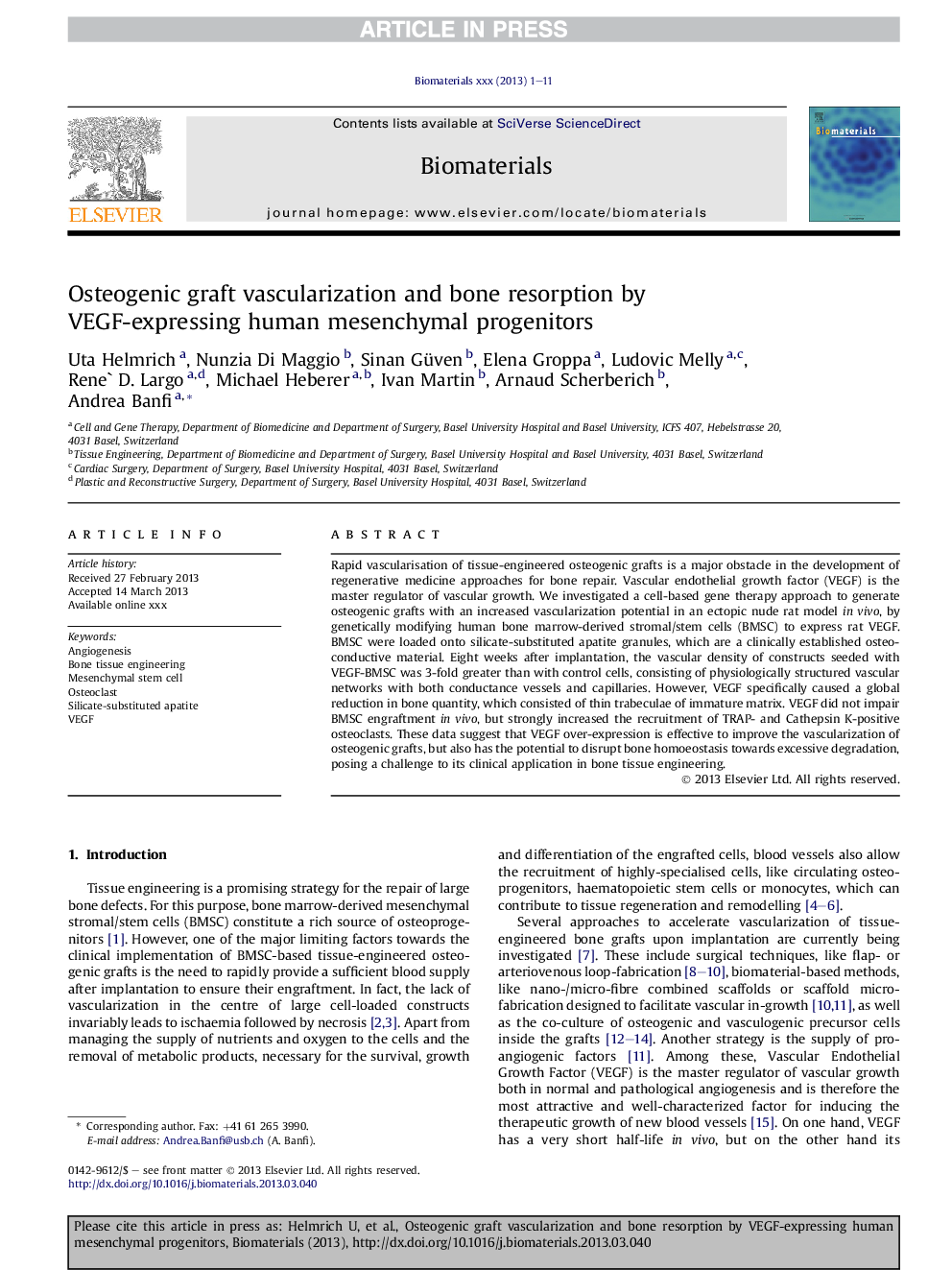| Article ID | Journal | Published Year | Pages | File Type |
|---|---|---|---|---|
| 10228976 | Biomaterials | 2013 | 11 Pages |
Abstract
Rapid vascularisation of tissue-engineered osteogenic grafts is a major obstacle in the development of regenerative medicine approaches for bone repair. Vascular endothelial growth factor (VEGF) is the master regulator of vascular growth. We investigated a cell-based gene therapy approach to generate osteogenic grafts with an increased vascularization potential in an ectopic nude rat model in vivo, by genetically modifying human bone marrow-derived stromal/stem cells (BMSC) to express rat VEGF. BMSC were loaded onto silicate-substituted apatite granules, which are a clinically established osteo-conductive material. Eight weeks after implantation, the vascular density of constructs seeded with VEGF-BMSC was 3-fold greater than with control cells, consisting of physiologically structured vascular networks with both conductance vessels and capillaries. However, VEGF specifically caused a global reduction in bone quantity, which consisted of thin trabeculae of immature matrix. VEGF did not impair BMSC engraftment in vivo, but strongly increased the recruitment of TRAP- and Cathepsin K-positive osteoclasts. These data suggest that VEGF over-expression is effective to improve the vascularization of osteogenic grafts, but also has the potential to disrupt bone homoeostasis towards excessive degradation, posing a challenge to its clinical application in bone tissue engineering.
Keywords
Related Topics
Physical Sciences and Engineering
Chemical Engineering
Bioengineering
Authors
Uta Helmrich, Nunzia Di Maggio, Sinan Güven, Elena Groppa, Ludovic Melly, Rene D. Largo, Michael Heberer, Ivan Martin, Arnaud Scherberich, Andrea Banfi,
